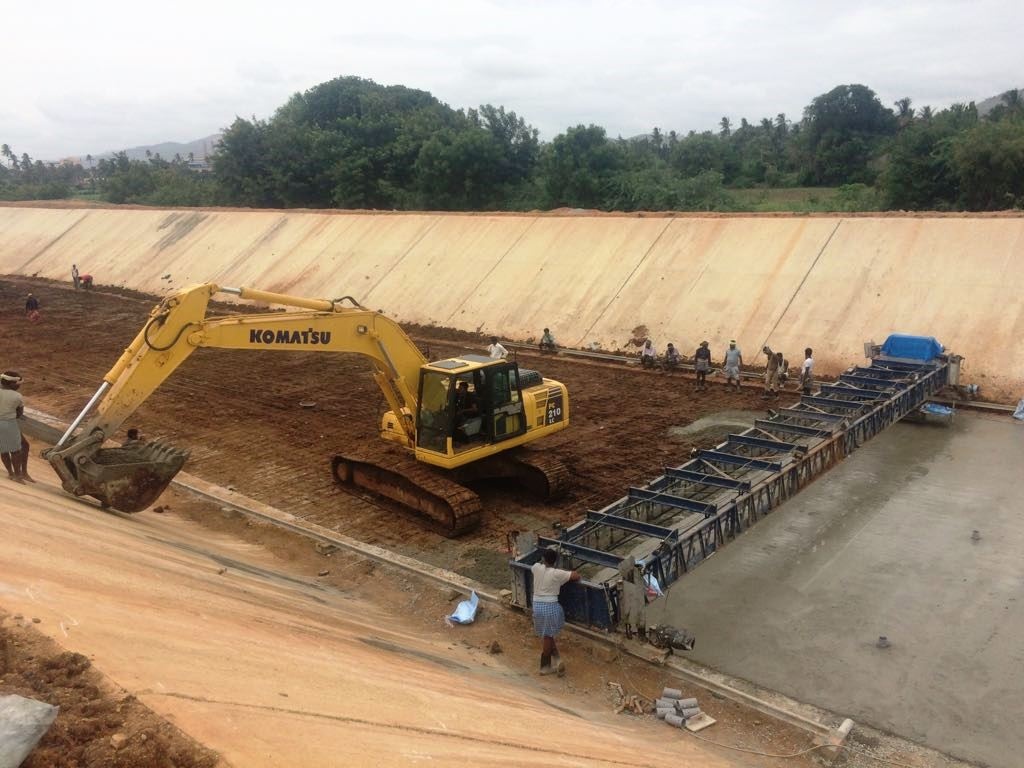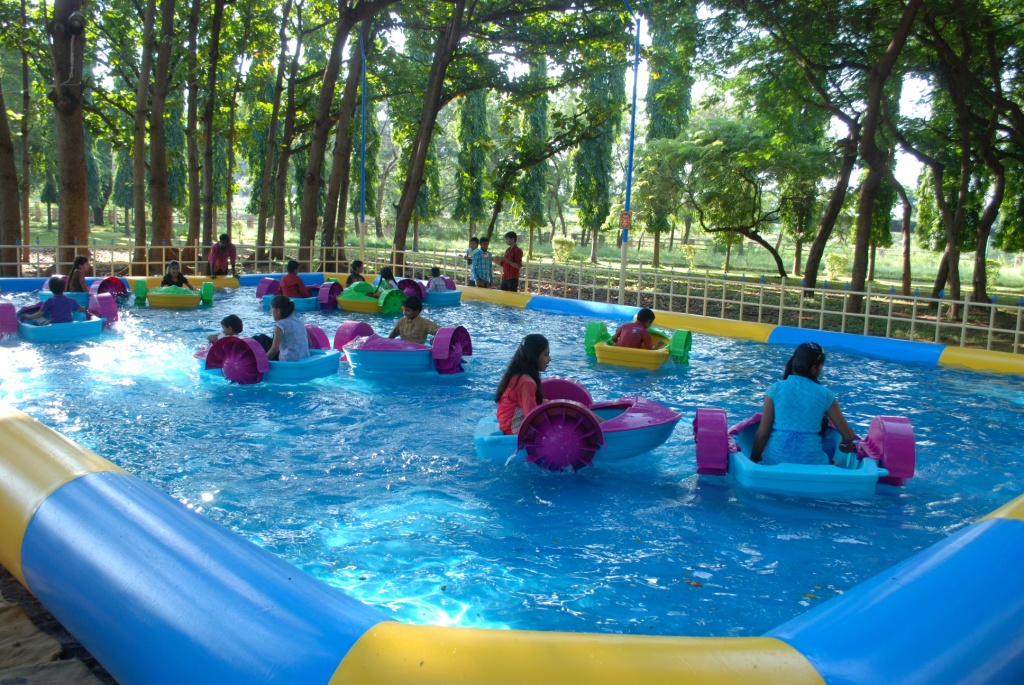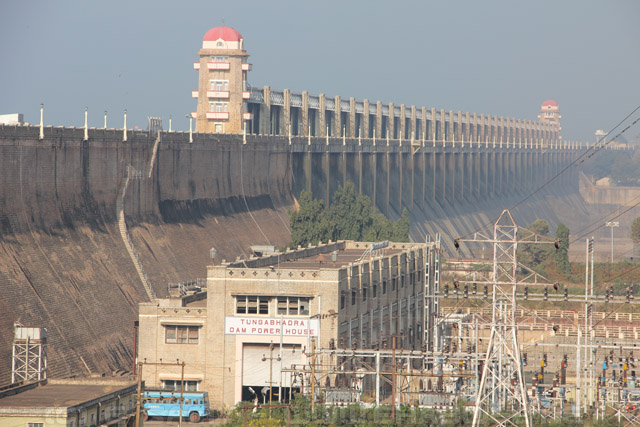
Modernization Works of RBHLC TB Board

The Tungabhadra project was taken up by then states of Madras and Hyderabad during February 1945. With the formation of Andhra State Act 1953, certain areas of the project of the right side of the river belonging to the then madras state were transferred to the then Mysore state and the project became a venture of the then states of Mysore, Andhra. This resulted in more than 55 percent of irrigated area on the right bank of the river falling in Andhra & the reservoir with the head reaches of the canal system lying in the state of Mysore .This situation warranted constitution of an independent body to look after the timely completion of the approved project, its maintenance and oversee distribution of benefits to the states.

Subsequently ,as per the Andhra State Act,1953,President of Indian was authorized to give directions for the completion of the project and its operation and maintenance there after .Accordingly, Under a presidential order, Tungabhadra Board was constituted with effect from 1st oct,1953 vide notification No DW II -22(129) Dated 29 th sep,1953 of the then ministry of irrigation and power.
The Board constituted of chairman appointed by government of India & six members were chief engineers of both irrigation and power department of the government of Andhra, Mysore and Hyderabad .Chairman of the central water And power commission was appointed the chairman of the board in addition to his normal duties .The board was entrusted with the task of completion of the Project and to deal with all matters relating to works, which were common to both the states of Andhra and Mysore.
The board was reconstituted with effect from 15 march, 1955 vide notification No DW VI (4) (9) Dated 10-3-1955 of the then Ministry of irrigation and power (copy at Annexure 2.1).The reconstituted Board consisted of a chairman appointed by the government of India, Andhra, Mysore and Hyderabad. After the reorganization of the states in 1956, the Hyderabad Government representative was deleted from Board vide Notification Np.39(25)/56 DW .VI dated 1.11.1056 of then ministry of irrigation and power.
Earlier the center line of the Tungabhadra River was the boundary on then states. With re-organization of states, the center line of river no more remained the boundary and the canal on the right bank meandered through the states of Andhra Pradesh and Karnataka
Present Composition Of Board
The present composition of the Tungabhadra Board is as follows:
Present Composition Of Board
Chairman(Nominated by GoI) Chief engineer, Krishna & Godvari Basin, central water commission, Hyderabad
Member (Representing GoI) Finical Adviser and joint Secretary ,Ministry of water Resources, New Delhi
Member (Representing GoAP) Engineer-in-chief, (Irrigation),Irrigation & CAD Dept., Hyderabad
Member (Representing GoT) Engineer-in-chief, (Irrigation),Irrigation & CAD Dept., Hyderabad
Member (Representing GoK) Secretary to government, Water Resources Department, Government of Karnataka, Bangalore.
Chairman:
Shri P.Ramachandra Rao,
Chairman,Tungabhadra Board and Chief Engineer(KGBO),
Central Water Commission,
H.No.11-4-648,
K.G.Bhavan,A.C.Guards,
Hyderabad.
Member of Government of India
Shri Sunil Kumar Kohli
Member of Government of Andra Pradesh :
Shri Aditya Nath Das
Member of Government of Karnataka
Shri B.G.Guruparaswamy
Function of the Board
The important functions of the Board, initially laid down were:
Completion of the construction of the sanctioned project;
Regulation of supplies of water and power in accordance with such rules as may be made in this behalf by the Board;
Maintenance of canals and other works common to both the states of Karnataka And Andhra Pradesh;
Maintenance of the dam and Reservoir of the project;
Granting of lease of fisheries in the reservoir in the canals:
Proper utilization of land acquired for the purpose of the project; and
Any other function incidental to or connected with the function specified in above clauses.
In the discharge of its assigned functions, the Board exercises power of state Government .Board makes its own rules for the conduct of its own business .The Board appoints a whole time secretary

PARKS AND GARDENS
Since completion of the dam, the Board has developed and maintained many gardens and parks, downstream of the dam and in the colonies. The gardens near the dam are attracting many tourists.

Nandanavana Garden
Japanese Park
Deer Park
Birds Aviary
Children Park
Vaikunt Guest House Garden
Circular Park and Triangular Park
Nandanavana Garden
Nandanavana garden was developed soon after the completion of the dam during the year 1956-57. Thisgarden is located just downstream of the dam running parallel to it. It has an area of about 6 acres (2.43 ha) and is designed and developed on the lines of Brindavan Gardens at Krishna Raj Sagar near Mysore. It is well laid with four terraces at different elevations. The first terrace is housing circular type fountain with a Shiva statue at the center. The other three terraces are equipped with fountains of various designs, running parallel and perpendicular to the layout of the garden. This garden has got welll-maintained lawns, Bougain villea on the slopes, seasonal and annual flower beds, Christmas trees, Cyprus plants and topiary arches.
Japanese Park
Japanese Park was developed in the year 1968-69 with a total area of 18 acres (7.29 ha) and is located adjacent to Nandanavana garden. It has got 3 water ponds, namely mango shaped pond, bean shaped pond and children peddle pond which were constructed after 1970. This park has arches, ornamental flowering trees, flowerbeds, etc. A musical dancing fountain was added to the garden in the year 1994 which provides added attraction for visitors. An aquarium was constructed within the garden to provide further choice of entertainment and education for the visitors.
Deer Park
The Deer park is located just by the side of Japanese park. It was developed in the year 1982, with anapproximate area of about 15 acres (6.07 ha). At present , it has got about 70 spotted deer’s, 4 sambars, 4 neelgai, 6 black bucks, 1 chinkora, 30 rabbits and 2 porcupines.
Birds Aviary
A small aviary is housed in the complex of Deer park and was developed in the year 1989. Presently, it has got about 200 pigeons, 4 peacocks, 15 guinea fowl and 10 parrots.
Children Park
Children Park is located in the township area of TB Dam on the main road, and was developed during 1984. It has got latest type of sea-saws, bars, swings and other items for children. The park is exclusively meant for children below 12 years.
Vaikunt Guest House Garden
Garden at Vaikunt Guest House was developed during the year 1960-61. It is a formal garden with well designed fountains, flower bed, topiary arches, flowering trees etc.
Photo vaikunt and garden.
Circular Park And Triangular Park
A Circular Park and a Triangular Park is located just in front of the Administrative building. It was developed at the time of construction of dam. It is also a formal garden with lawns, flowering trees, shrubs, arches etc.

Although primarily intended as an Irrigation Project, the impounded water in Tungabhadra Reservoir is also utilized to generate power before being let out into the canals for irrigation purpose. The power generated on the left side is entirely used by Karnataka while that generated through two power houses on the right side is shared by states Karnataka and Andhra Pradesh in the ratio of 20:80. One Power House is at the foot of the dam and another at Hampi, 21Km from the dam. The Scheme of generating electricity at these two powerhouses is called “Tungabhadra Hydro Electric Scheme”(TBHES). Work on Dam Power House was taken up in 1951 while that on Hampi power house in 1956. These power houses were commissioned in 1957 and 1958 respectively.
Dam Power House
Dam Power House is located at the foot of the dam. The gross head available at dam powerhouse for generation of power varies from 13m to 26.8m (43ft to 88ft). The four turbines are connected with four steel penstocks, each of 3.3m (11 ft) dia, to the reservoir through butterfly valves. In the first stage, two units each of 9 MW were commissioned on 23rd May 1957 The two units each of 9 MW of second stage were commissioned on 26th February 1964 and 17th June 1964. The total installed capacity of Dam Power House is 36 MW.
The main objective of the project being irrigation, electricity generation is dependent on the water releases made for irrigation requirements in the RBLLC and river assistance to RDS and KC Canal. Water releases vary from time to time as per irrigation demands furnished by the states. During rainy season, especially when the reservoir is nearing 1633ft or isoverflowing, full generation of 36 MW is feasible at the dam power house drawing water at the rate of 5,600 cusecs (153 cumecs) with maximum differential head of 88 ft.(26.8 m).
Hampi Power House
Hampi Power House is fed from the tailrace water from dam powerhouse through the Power Canal. A fore bay is located at the end of this canal which has a storage capacity of 26 Mcft(0.74 Mcum) with normal level of 463.1 m (1,519 ft). The intake structure at forebay has gates, hoists and trash racks. There are two low pressure steel pipe lines (LPPL) each of 5.48m dia (18 ft) and 868.3m in length carrying discharge from forebay to the power house. At the end of each LPPL there is a steel differential surge tank with 18.3m (60 ft) dia and 18.3m (60 ft) in height. There are four penstock pipes each 3.66m (12ft) dia with a maximum discharge capacity of 1,100 cusecs (31.15cumec) two from each of the surge tanks, installed and connected independently to each turbine in the power house.Each penstock is provided with a 3.66 m (12ft) butterfly valve, an air valve at surge tank end and 3.05 m (10 ft) butterfly valve and venturimeter at power house end.
The first unit of 9 MW was commissioned on 10th February 1958 and the second unit of 9MW on 26th March 1958. The remaining two units, each of 9 MW, were commissioned in April and July 1964.
The total installed capacity of Hampi Power House is 36 MW. After generation of power at the Dam Power House water is led into the Power Canal. The discharge carrying capacity of the Power Canal is limited to 2,500 cusecs (70.79 cumec) and hence maximum generation at Hampi Power house is limited to 20 MWs against an installed capacity of 4 x 9 = 36 MW. The generation at Hampi powerhouse is dependent on water discharge through Power Canal. The water discharged from Hampi powerhouse is led into Low Level Canal and is allowed through Gundlakeri escape in case of demand for river assistance.
SHARING OF POWER
The power generated at both the power houses is to be shared in the ratio of 80:20 between Government of Andhra Pradesh and Government of Karnataka.